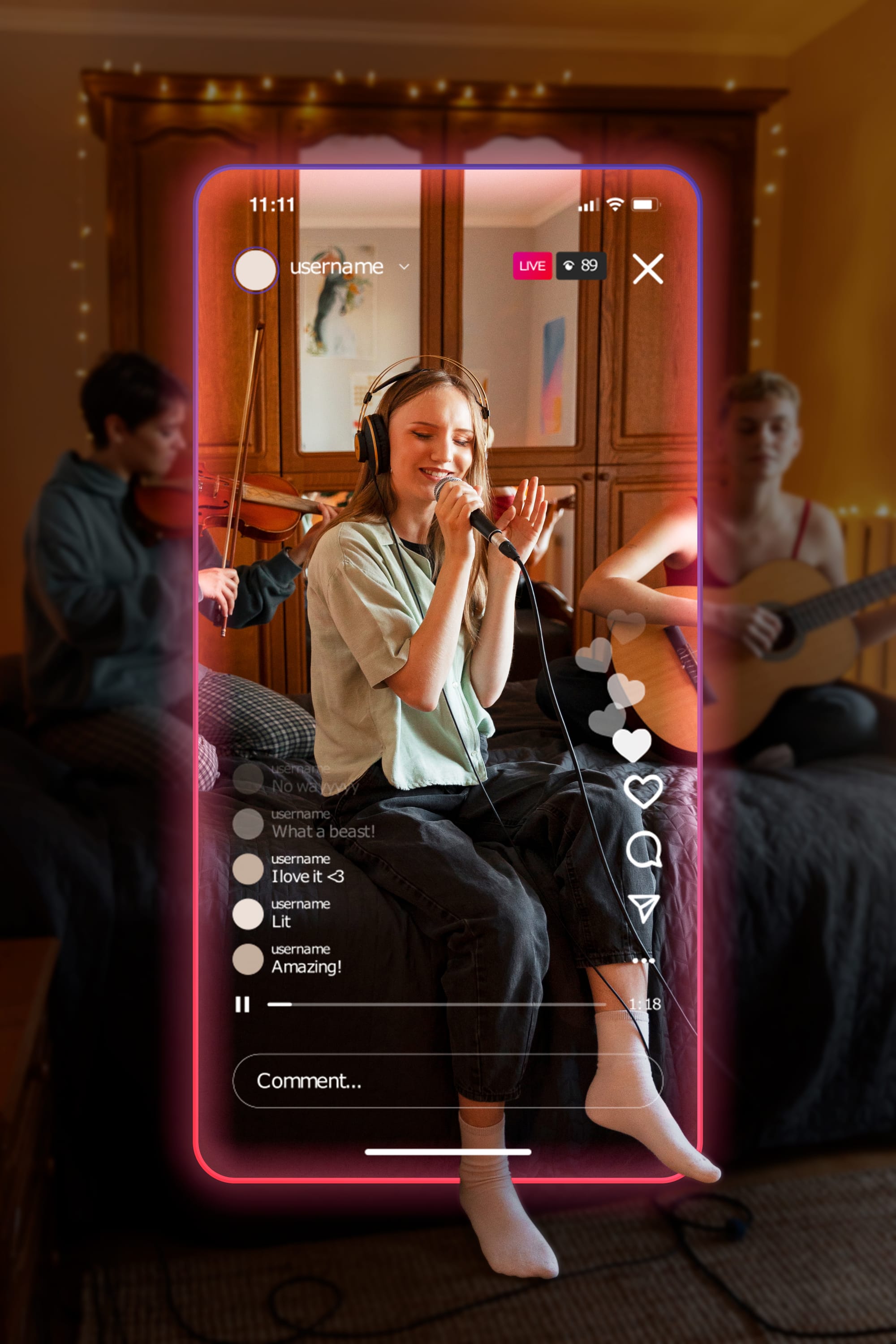AI avatars are taking over livestream shopping
AI avatars are reshaping livestream shopping in Indonesia. These digital hosts mimic human expressions, gestures, and voices in real time, streaming endlessly without fatigue. While they scale efficiency, human hosts still lead in trust and engagement, creating a hybrid future for digital commerce.

The rise of digital humans in livestream commerce
AI avatars are digital humans powered by real-time generative AI. They can host livestreams, product demos, webinars, or customer support sessions, mimicking human behavior so naturally that it’s easy to forget you’re watching code, not a person. By blending animation, language models, and voice synthesis, these avatars replicate facial expressions, gestures, and tone.
They work in real time. A webcam or motion capture system records a user’s movements and expressions, which the AI mirrors instantly, mouth sync, blinking, head tilts, and all. Their voices are cloned or generated, allowing speech in multiple languages and accents. During live sessions, they can respond to viewer questions using a knowledge base, functioning as virtual hosts or assistants.
This technology is now stepping into one of the most dynamic corners of global commerce, livestream shopping and it’s beginning to change the rules of engagement.
Indonesia: where the future of livestreaming is being tested
Livestream shopping has transformed how people buy online. In Indonesia, it’s not just a sales tool; it’s a social event. Open TikTok or Shopee Live, and you’ll find hosts chatting, teasing, and selling products in real time.
The format blends entertainment with entrepreneurship, creating an economy powered by charisma and connection.
According to research by Google, Temasek, and Bain & Company, Indonesia’s e-commerce market reached $65 billion in 2024, forty times larger than it was a decade ago.
Local startups like Social Bread are introducing AI avatars as livestream hosts. These digital humans can present products, speak multiple languages, and interact with viewers on command. They don’t need sleep, and they don’t charge per hour.

The human connection is still hard to replace
So far, audiences haven’t fully embraced their new virtual hosts. Viewers in Indonesia often describe AI avatars as “off,” their movements too smooth and their voices too even. As Rest of World reports, streams featuring human hosts still drive higher engagement. Shoppers say they miss the spontaneity—the quick reactions, laughter, and banter that make livestreams feel alive.
Still, the potential is undeniable. In China, Baidu’s platform recently hosted an event with AI replicas of celebrity sellers. The six-hour stream drew 13 million viewers and generated ¥55 million ($7.6 million) in sales.
Economy for digital workers
In Indonesia, livestreaming isn’t just entertainment, it’s employment. Many hosts come from small towns, using livestreaming as a path to stable income and entrepreneurship. The arrival of AI challenges that progress. When one avatar can do the work of ten human hosts, the economics of digital labor change dramatically.
Yet adaptation is already happening. Some creators are learning to manage or train avatars, merging creativity with technical control. Others are licensing their likenesses to brands, allowing AI versions of themselves to stream while they sleep. The work is evolving from performing to producing, from being on screen to building what’s on screen.

Efficiency meets emotion
AI avatars win on endurance and scale. They can handle thousands of simultaneous chats, track engagement data, and operate 24/7.
For transactional or information-heavy sales, like tech accessories or household essentials, they make sense. But for emotional categories like fashion, beauty, or lifestyle, human presence still carries more weight.
Shopping is as much about feeling as it is about function. People tune in because they trust the person behind the camera, not just the product. A perfectly animated face can’t yet replicate that sense of connection. The future of livestreaming will depend on how brands balance efficiency with empathy.
Insight for business Leaders
For business leaders, this is not another echnology trend, it’s a strategic inflection point. AI avatars can lower operational costs, expand brand reach, and maintain round-the-clock visibility. But the benefits only matter if they enhance trust, not erode it.
A hybrid approach is emerging as the sweet spot. Use AI to scale repetitive or late-hour sessions, while keeping human hosts at the heart of storytelling and community building. Let machines handle volume and data, and let people handle nuance and emotion.
Investment in authenticity is critical. Poorly designed avatars can make streams feel robotic and damage credibility. Transparency also matters, disclosing when a host is AI-generated builds audience confidence. China’s platforms have already started enforcing these disclosures, and similar regulations are likely to reach Southeast Asia soon.
Because in the end, the best hosts human or not don’t just sell products. They create moments people want to be part of.





